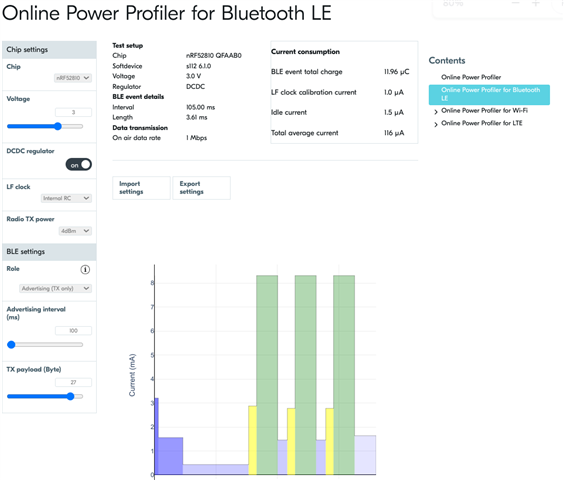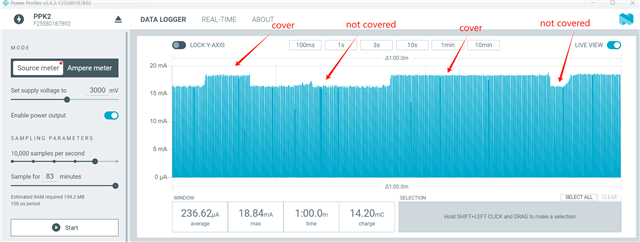HI all,
I've found that adding a 10uF capacitor to the 52805 beacon reduces the power consumption, especially after speeding up the broadcast interval (100ms broadcast interval).
The conclusion is that the reason for the high power consumption without capacitors is the high total power consumption during broadcast (average current of one transmit wave peak * peak duration)
btw, beacon with chip and peripherals only,the firmware is Nordic official routine, it can broadcast only, 100ms, 4dBm.
We also tested the 52810 beacon and found the same phenomenon, but we don't have a more accurate power consumption test instrument, I'm not quite sure if it's the addition of this capacitor that reduces the power consumption, or if the power consumption board (PPK2) can't measure it.


